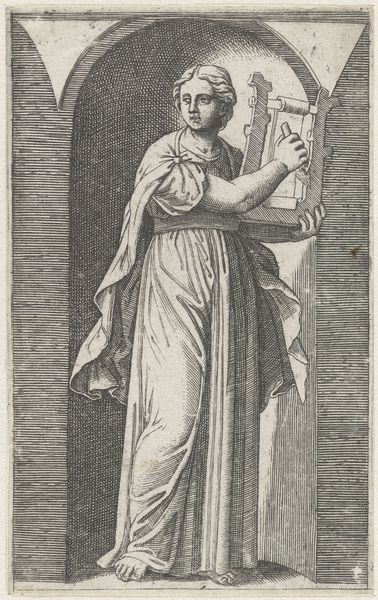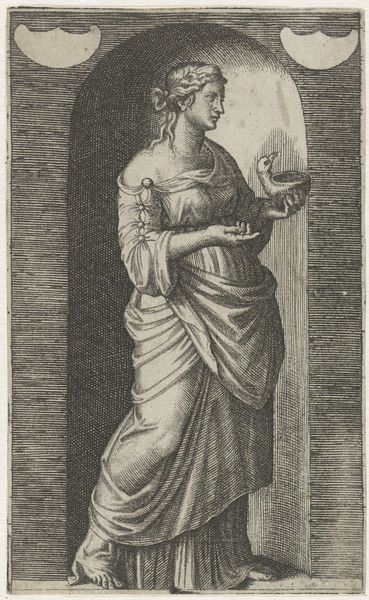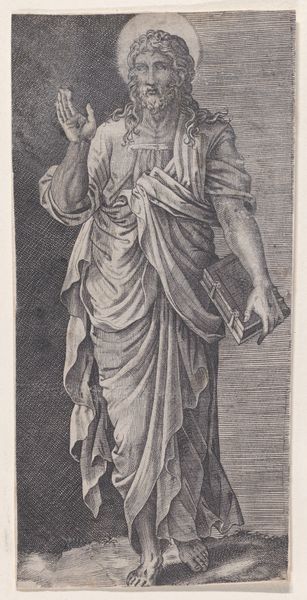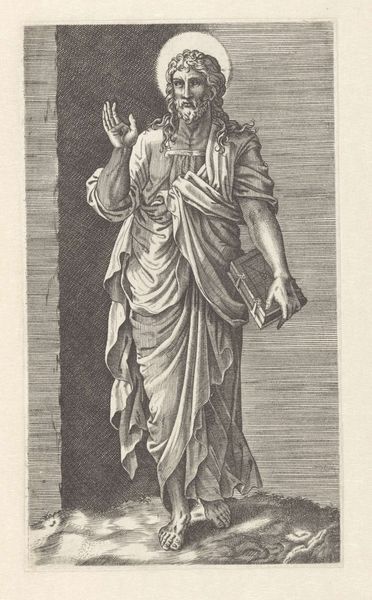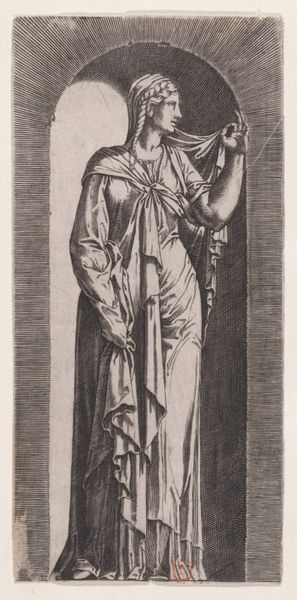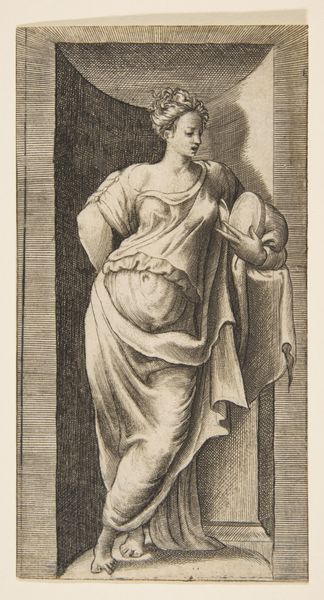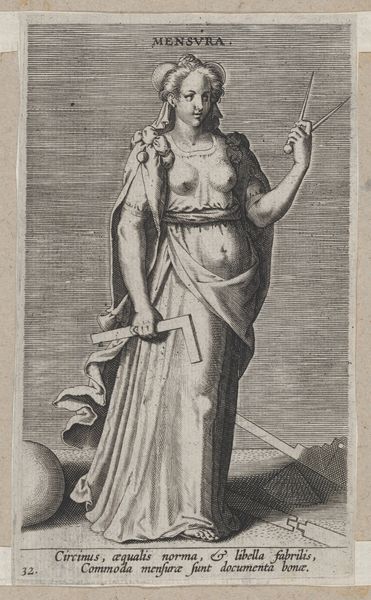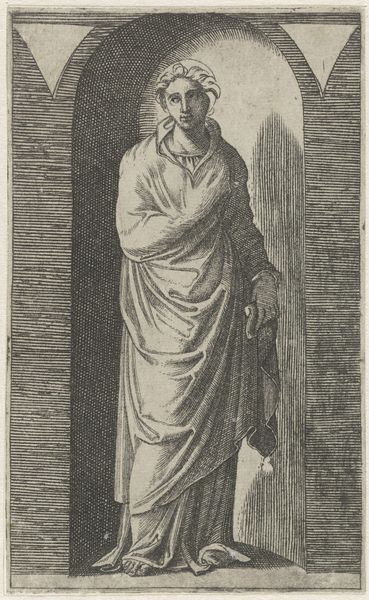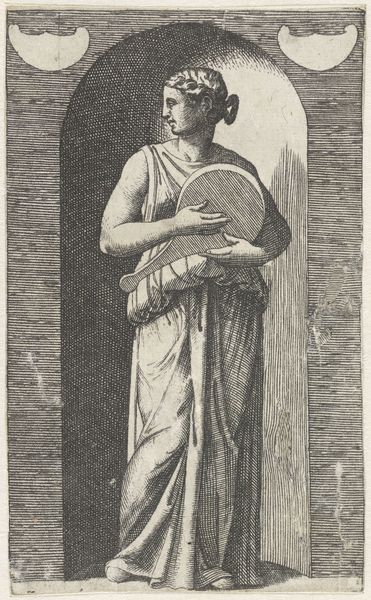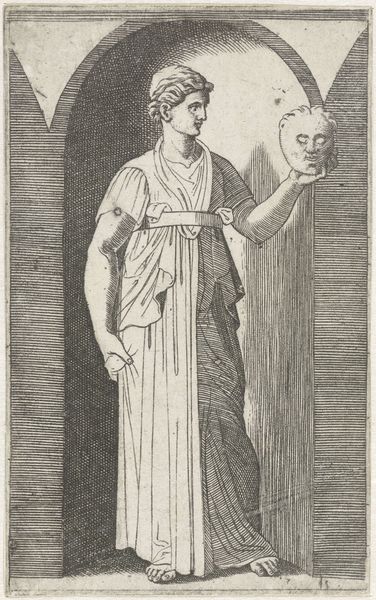
print, engraving
#
portrait
# print
#
old engraving style
#
figuration
#
portrait drawing
#
history-painting
#
italian-renaissance
#
engraving
Dimensions: height 128 mm, width 80 mm
Copyright: Rijks Museum: Open Domain
Curator: Looking at this image, I'm struck by the starkness of the engraving and the way light plays across the draped figure. There’s something so immediate in the contrasting blacks and whites. Editor: That's right. We’re looking at “Muse with Two Scrolls Standing in a Niche,” an engraving by Marcantonio Raimondi, created sometime between 1511 and 1520. It’s part of the collection at the Rijksmuseum. Curator: Raimondi’s process is remarkable; engraving requires incredible skill. Consider the labor and tooling involved in making marks on a copper plate. What level of training or guild was required to produce this? And who commissioned this engraving and why? Editor: Precisely. Raimondi was instrumental in popularizing reproductive printmaking. His workshop allowed for greater distribution of Renaissance ideals through imagery, which, of course, impacted artistic taste at the time. Note how prints were consumed; the elite owned books, prints were tacked on walls—a whole other realm of consumption. Curator: And this reproduction of Raphael. She seems like a classical sculpture come to life; look at her idealized features and contrapposto stance. But more so I wonder who decided this image was worthwhile reproducing at the time? What type of institutions are making choices and how might this figure stand as an example? Editor: I am not so sure about Renaissance ideals exactly – engravings democratized images, bringing high art within reach of those outside elite circles. That has its own subtle socio-political power; suddenly, aesthetic values are something anyone could theoretically obtain, although economic structures certainly created uneven distribution. What does mass production enable or foreclose? Curator: Absolutely. The distribution shapes its impact, transforming a work accessible by so few into something within reach of, though probably not fully grasped by, many more. This reproduction raises significant issues about patronage, value, access, and how images shape taste—and in turn, behaviors, even! Editor: Indeed, this print’s story reveals not just Renaissance art but also the beginning of art's journey into the public sphere. Curator: Thinking of its modern impact and historical setting, the impact of this one object truly remains boundless! Editor: The convergence of aesthetic vision, labor, socio-economic, and historic conditions all come to together for each and every piece we study.
Comments
No comments
Be the first to comment and join the conversation on the ultimate creative platform.
